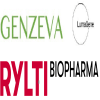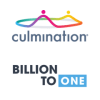Dive Brief:
- Swiss pharma Roche is moving into late-stage testing of an implantable device that delivers a special concentration of the active ingredient in Lucentis, having notched positive results from a Phase 2 study of patients with a chronic disease that can severely damage vision.
- Dubbed the Port Delivery System (PDS), the implant is refillable and about the size of a grain of rice. It's placed into the eye, providing continued dosing of ranibizumab. Results from the LADDER trial, announced Wednesday, showed a majority of wet age-related macular degeneration (AMD) patients who received the device went at least six months before needing a refill of the drug.
- Regulators recommend wet AMD patients treated with the currently marketed Lucentis get a 0.5 mg injection every 28 days. "With the PDS, we have an opportunity to make a positive impact by helping to potentially eliminate the burden of frequent treatments for people with wet AMD," said Sandra Horning, Roche's chief medical officer and head of global product development, in a July 25 statement.
Correction: A previous version of this article incorrectly identified the concentration of ranibizumab used in the Phase 2 trial and some of the trial results.
Dive Insight:
Lucentis (ranibizumab) came to market in 2006 and quickly proved a disruptor for both the wet AMD treatment space and Roche's bottom line. By the end of 2011, the drug had secured a label expansion and annual sales of more than 1.52 billion Swiss francs, or $1.63 billion.
Also around that time, Regeneron Pharmaceuticals got a Food and Drug Administration thumbs up for Eylea (aflibercept). Like Lucentis, Eylea inhibits a signaling protein called vascular endothelial growth factor (VEGF) and is approved for wet AMD patients. Yet unlike Roche's drug, Eylea has been able to achieve year-over-year sales growth as it snagged larger and larger portions of eye disease markets.

Key to that growth was Eylea's advantageous dosing. It's currently offered as a 2 mg once-monthly dose, with an option for patients to switch to a once every two month regimen after the first three months of treatment. And a 12-week dosing schedule could get U.S. regulatory approval by mid-August.
The Port Delivery System, therefore, could help Roche keep up with the competition.
In LADDER, patients implanted with the device received one of three formulations of the special ranibizumab concentration. At the 10 mg per mL, 40 mg per mL and 100 mg per mL doses, about 64%, 71% and 80% of patients, respectively, went at least six months before needing a refill.
Additionally, those on the 100 mg per mL regimen demonstrated improvements in Best Corrected Visual Acuity — or the number of letters they could read on a vision chart — similar to patients on monthly Lucentis injections.
"LADDER is the first successful Phase 2 study of a long-acting delivery device for the treatment of wet AMD. We are highly encouraged by these results and the potential of the PDS, our first implantable, drug delivery program," Roche's Horning said in the July 25 statement.














